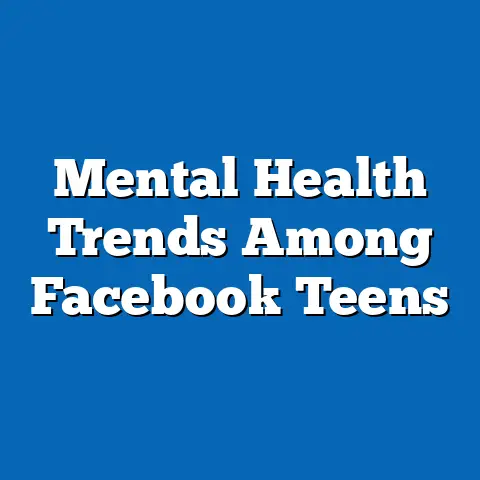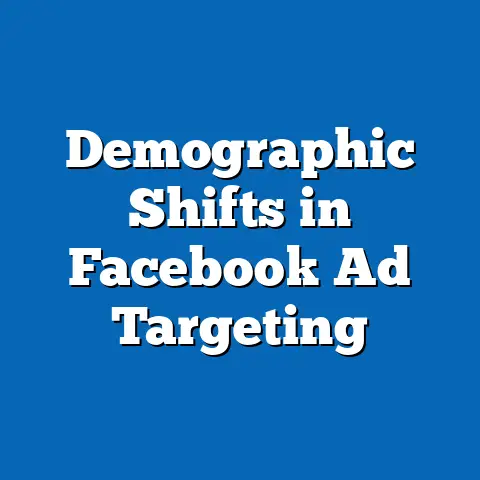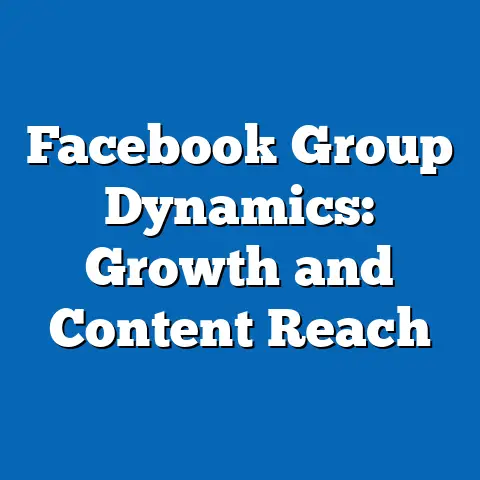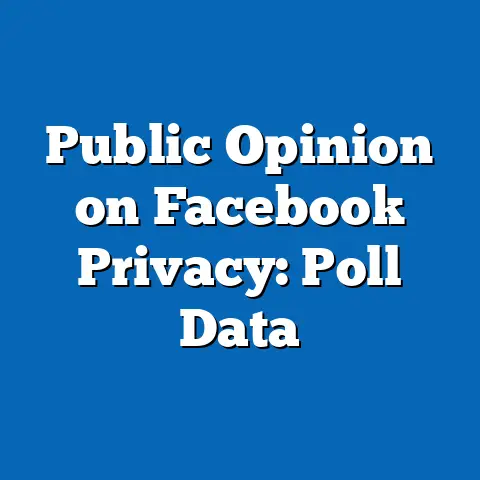Facebook Stories: Engagement by Age
In 2021, Facebook (now under the Meta umbrella) celebrated a remarkable milestone: over 500 million daily active users engaging with its Stories feature, a short-form, ephemeral content format launched in 2017. Inspired by Snapchat’s innovative storytelling model, Facebook Stories allows users to share temporary photos and videos that disappear after 24 hours, fostering spontaneous and authentic interactions. This achievement underscores the platform’s adaptability in a rapidly evolving digital landscape and highlights the growing appetite for transient, visually driven content across diverse demographics.
The rise of Stories reflects broader societal shifts toward immediacy, visual communication, and personal expression in the digital age. Unlike traditional posts, Stories prioritize fleeting moments over curated permanence, resonating with a culture increasingly valuing real-time connection. This article delves into how engagement with Facebook Stories varies across age groups and generational cohorts, exploring the historical, cultural, and technological contexts that shape these patterns, and examining the implications for social interaction, marketing, and digital ecosystems.
Defining Generations and Age-Based Engagement
Generational studies provide a framework for understanding how age cohorts, shaped by shared historical and cultural experiences, interact with technology. While labels and date ranges can vary, commonly accepted generational definitions include Baby Boomers (born 1946–1964), Generation X (1965–1980), Millennials (1981–1996), Generation Z (1997–2012), and the emerging Generation Alpha (2013–present). Each group’s engagement with digital tools like Facebook Stories is influenced by their formative years, economic conditions, and exposure to technological advancements.
Engagement, in this context, refers to both active participation (creating and posting Stories) and passive interaction (viewing or reacting to others’ Stories). Analyzing these behaviors by age reveals distinct preferences and motivations. This article draws on quantitative data from industry reports, such as those by Statista and Hootsuite, alongside qualitative insights from user surveys and academic studies to paint a comprehensive picture of generational trends in Facebook Stories usage.
The Stories feature emerged amid a broader cultural shift toward mobile-first, visual storytelling, driven by the proliferation of smartphones and high-speed internet. Instagram, also owned by Meta, had already popularized Stories in 2016, and Facebook’s adoption aimed to retain users across its ecosystem. This historical backdrop—marked by rapid technological innovation and fierce competition in the social media space—sets the stage for understanding how different generations adopted or resisted this feature.
Generational Characteristics and Engagement Patterns
Baby Boomers (Ages 59–77 in 2023)
Baby Boomers, born in the post-World War II era of economic prosperity and social change, grew up in a pre-digital world dominated by traditional media like television and radio. Their formative years were shaped by events such as the Civil Rights Movement, the Vietnam War, and the moon landing, fostering a sense of optimism and collective responsibility. While often stereotyped as tech-averse, many Boomers have embraced social media to stay connected with family and friends, particularly during the COVID-19 pandemic when digital tools became lifelines for social interaction.
Engagement with Facebook Stories among Boomers tends to be more passive than active. According to a 2022 Pew Research Center report, only about 10% of U.S. adults over 65 regularly post content on social media, with most preferring to consume rather than create. For Boomers, Stories are often a window into the lives of younger relatives, with many viewing content shared by children or grandchildren rather than posting their own.
Economic stability and retirement often afford Boomers more leisure time, yet their limited familiarity with newer features like Stories can hinder active participation. Cultural factors, such as a preference for privacy over public sharing, also play a role. However, when Boomers do engage actively, their content often reflects nostalgia—sharing old photos or family milestones—highlighting a generational inclination toward preserving memories over fleeting trends.
Generation X (Ages 43–58 in 2023)
Generation X, often dubbed the “latchkey generation,” grew up during a time of economic uncertainty, dual-income households, and the dawn of personal computing in the 1980s and 1990s. Shaped by events like the Cold War’s end and the rise of MTV, Gen Xers are known for their independence, adaptability, and skepticism of authority. As digital immigrants who adopted technology in adulthood, they straddle the analog and digital worlds, making them versatile but sometimes cautious users of social media.
Gen X engages with Facebook Stories at a moderate level, balancing creation and consumption. A 2021 Hootsuite report found that roughly 25% of Gen X social media users in the U.S. post short-form content like Stories at least weekly, often using it to share personal updates or professional snippets. Their engagement is frequently pragmatic—think quick updates on daily life or work-related announcements—reflecting their focus on efficiency and utility.
Technologically, Gen Xers are comfortable with platforms like Facebook, having joined during its early expansion in the late 2000s. However, they are less likely than younger generations to prioritize Stories over traditional posts, as their social media habits were formed before ephemeral content became mainstream. Socially, their dual role as parents and professionals often shapes their content, with Stories serving as a tool for casual family updates rather than trend-driven self-expression.
Millennials (Ages 27–42 in 2023)
Millennials, born during the rise of globalization and the internet, are often called the first “digital natives,” though their early years included analog experiences. Key events like the 9/11 attacks, the 2008 financial crisis, and the advent of social media shaped their worldview, fostering adaptability, a focus on experiences over material wealth, and a strong reliance on technology. As early adopters of platforms like Facebook, Millennials have been instrumental in shaping social media culture.
Engagement with Facebook Stories among Millennials is robust, with both active posting and frequent viewing. Statista data from 2022 indicates that around 40% of U.S. Millennials use Stories features across platforms daily, with Facebook remaining a key hub due to its broad user base. Their content often emphasizes authenticity—behind-the-scenes glimpses of life, travel, or parenting—reflecting a generational desire for connection and relatability over polished perfection.
Economically, many Millennials face challenges like student debt and housing instability, which can influence their social media use as a low-cost outlet for expression and community-building. Culturally, their comfort with digital trends and visual storytelling makes Stories a natural fit. However, as they age into more professional and family-oriented roles, some Millennials are shifting away from oversharing, using Stories more selectively compared to their younger years.
Generation Z (Ages 11–26 in 2023)
Generation Z, born into a fully digital world, has never known life without smartphones or social media. Shaped by events like the Great Recession, climate change activism, and the global pandemic, Gen Z prioritizes individuality, social justice, and technological integration. Often seen as trendsetters in digital spaces, they were the original target audience for ephemeral content through platforms like Snapchat, which heavily influenced the Stories format.
Gen Z exhibits the highest engagement with Facebook Stories among all age groups, though their primary platforms are often Instagram and TikTok. A 2023 report by Morning Consult found that over 60% of U.S. Gen Z users interact with Stories daily across apps, with a significant portion using Facebook Stories to connect with older family members or niche communities. Their content is highly creative, often incorporating filters, music, and memes, reflecting a fluency with digital tools and a preference for humor and self-expression.
Technologically, Gen Z’s seamless integration with mobile apps drives their active participation, though privacy concerns—stemming from high-profile data scandals—can make them wary of oversharing on platforms like Facebook. Socially, their focus on visual, bite-sized content aligns perfectly with Stories, though their loyalty to newer platforms may limit long-term engagement with Facebook specifically. Diversity within Gen Z, including varying access to technology based on socioeconomic status, also shapes how and why they use Stories.
Generation Alpha (Under 11 in 2023)
Generation Alpha, the youngest cohort, is still emerging as a demographic group, with limited direct engagement due to age restrictions on social media platforms. Born into an era of ubiquitous technology, AI, and streaming media, they are shaped by events like the COVID-19 pandemic and advancements in virtual reality. While too young to use Facebook Stories independently, their indirect exposure through parents or older siblings offers early insights into future trends.
Direct data on Alpha’s engagement is scarce, but studies like those from Common Sense Media (2022) suggest that children under 13 are increasingly exposed to social media through family accounts or shared devices. Parents, often Millennials or Gen Xers, may post Stories featuring Alpha children, inadvertently shaping their early digital footprints. This raises ethical questions about privacy and consent, a growing concern as this generation matures.
Technologically, Alpha’s world will be even more integrated with augmented reality and AI-driven content, potentially redefining how Stories evolve. Socially, their hyper-connected upbringing may make ephemeral content second nature, though overexposure risks and parental oversight will likely influence early adoption. For now, their engagement remains speculative, rooted in the behaviors of older generations around them.
Comparative Analysis: Cross-Generational Trends and Nuances
Comparing engagement across generations reveals both stark contrasts and surprising overlaps. Gen Z leads in active creation and consumption of Facebook Stories, driven by their digital nativity and cultural alignment with visual, short-form content. Millennials follow closely, balancing personal expression with maturing life priorities, while Gen X and Boomers lag in active posting but remain significant as viewers, often motivated by family connections.
Technological comfort is a key differentiator—younger generations’ fluency with mobile apps and trends fuels higher engagement, while older users face learning curves or prioritize privacy. Economic factors also play a role; for instance, Millennials and Gen Z may use Stories as free outlets for creativity amid financial constraints, while Boomers’ economic stability allows leisure use without urgency. Socially, the purpose of Stories varies—Gen Z seeks trends and peer connection, Millennials focus on authenticity, Gen X values utility, and Boomers prioritize family ties.
Nuance within generations is critical to acknowledge. Not all Gen Z users are tech-savvy influencers; socioeconomic disparities can limit access or interest. Similarly, tech-forward Boomers—often called “Silver Surfers”—may rival younger users in engagement, defying stereotypes. Cultural diversity, geographic location, and personal values further complicate blanket assumptions, reminding us that age is just one lens through which to view behavior.
Societal and Cultural Implications
The varying engagement with Facebook Stories across age groups has profound implications for how society connects and communicates. For younger users, Stories reinforce a culture of immediacy and visual literacy, shaping expectations for quick, digestible content in personal and professional spheres. This can enhance creativity and real-time interaction but risks fostering short attention spans or superficial engagement, as noted in studies like those from the Journal of Media Psychology (2021).
For older generations, Stories offer a bridge to younger family members, combating social isolation—a critical issue for aging populations. However, the ephemeral nature of Stories can exacerbate feelings of exclusion for those less tech-savvy, widening digital divides. Culturally, the feature promotes a shared visual language across generations, though differing usage patterns highlight persistent gaps in digital norms and values.
In the workplace, generational differences in Stories engagement influence marketing and communication strategies. Brands targeting Gen Z and Millennials increasingly leverage Stories for authentic, time-sensitive campaigns, with Meta reporting that 62% of users feel more connected to brands after viewing their Stories (2022). Meanwhile, reaching Gen X and Boomers may require hybrid approaches, blending Stories with traditional posts to accommodate varied preferences.
Broader societal concerns include privacy and mental health. Ephemeral content can reduce the permanence of digital footprints, appealing to privacy-conscious users across ages, yet the pressure to share constantly—especially among Gen Z—correlates with anxiety and comparison, per a 2020 study by the American Psychological Association. Balancing engagement with well-being remains a challenge as Stories evolve.
Technological and Economic Influences
The technological landscape underpinning Facebook Stories—mobile-first design, augmented reality filters, and algorithmic personalization—disproportionately benefits younger users accustomed to rapid innovation. Gen Z and Millennials, raised on iterative app updates, adapt quickly to new features, while older generations may struggle with interface changes or data usage costs, particularly in less affluent regions. Meta’s push toward integrating Stories with e-commerce (e.g., shoppable tags) also caters more to younger, consumer-driven cohorts, potentially sidelining older users less inclined toward impulse buying.
Economically, the feature reflects broader trends in the attention economy, where user engagement translates directly to ad revenue. A 2023 eMarketer report estimates that Stories ads across Meta platforms generate over $15 billion annually, with younger demographics driving higher click-through rates. This economic incentive fuels Meta’s focus on Gen Z and Millennials, though neglecting older users risks alienating a growing segment of the population with significant purchasing power—Boomers control over 50% of U.S. household wealth, per Federal Reserve data (2022).
Forward-Looking Insights and Uncertainties
As Facebook Stories continues to evolve, generational engagement patterns will likely shift with emerging technologies like AI-generated content and virtual reality integrations. Gen Z and the incoming Generation Alpha may drive demand for immersive, interactive Stories, while older generations could benefit from simplified interfaces or accessibility features to boost inclusion. The challenge for Meta lies in catering to diverse needs without fragmenting its user base—a delicate balance in an increasingly competitive social media landscape.
Uncertainties remain, including the long-term appeal of ephemeral content as privacy concerns grow and newer platforms emerge. Will Gen Z’s loyalty to TikTok and Instagram diminish Facebook Stories’ relevance, or can cross-generational family ties sustain its utility? Additionally, regulatory pressures around data protection and child safety may reshape how younger users, particularly Generation Alpha, access such features, with ripple effects across all age groups.
Economic and cultural shifts will also play a role. As Millennials and Gen X age into more stable financial positions, their engagement may mirror Boomers’ current family-focused usage, while global events—pandemics, economic downturns, or technological breakthroughs—could redefine priorities across cohorts. What remains clear is that Facebook Stories, as a microcosm of digital interaction, encapsulates the dynamic interplay of age, technology, and culture, offering a lens into how generations navigate an ever-changing world.
Conclusion
Facebook Stories, with over 500 million daily users, stands as a testament to the power of ephemeral content in shaping modern communication. Engagement varies widely by age, from Gen Z’s trendsetting creativity to Boomers’ passive family connections, reflecting deeper generational differences in technological comfort, cultural values, and social priorities. These patterns carry significant implications for societal connection, workplace strategies, and digital equity, underscoring the need for nuanced, inclusive approaches to technology design and policy.
Looking ahead, the trajectory of Stories will hinge on Meta’s ability to adapt to diverse generational needs while navigating privacy, mental health, and competitive challenges. As new cohorts like Generation Alpha come of age, the feature’s evolution will offer fresh insights into how digital tools can unite—or divide—across the lifespan. For now, Facebook Stories remains a vibrant arena where age-old human desires for connection and expression meet the cutting edge of technology, inviting us to reflect on what it means to share in a fleeting, fragmented world.






